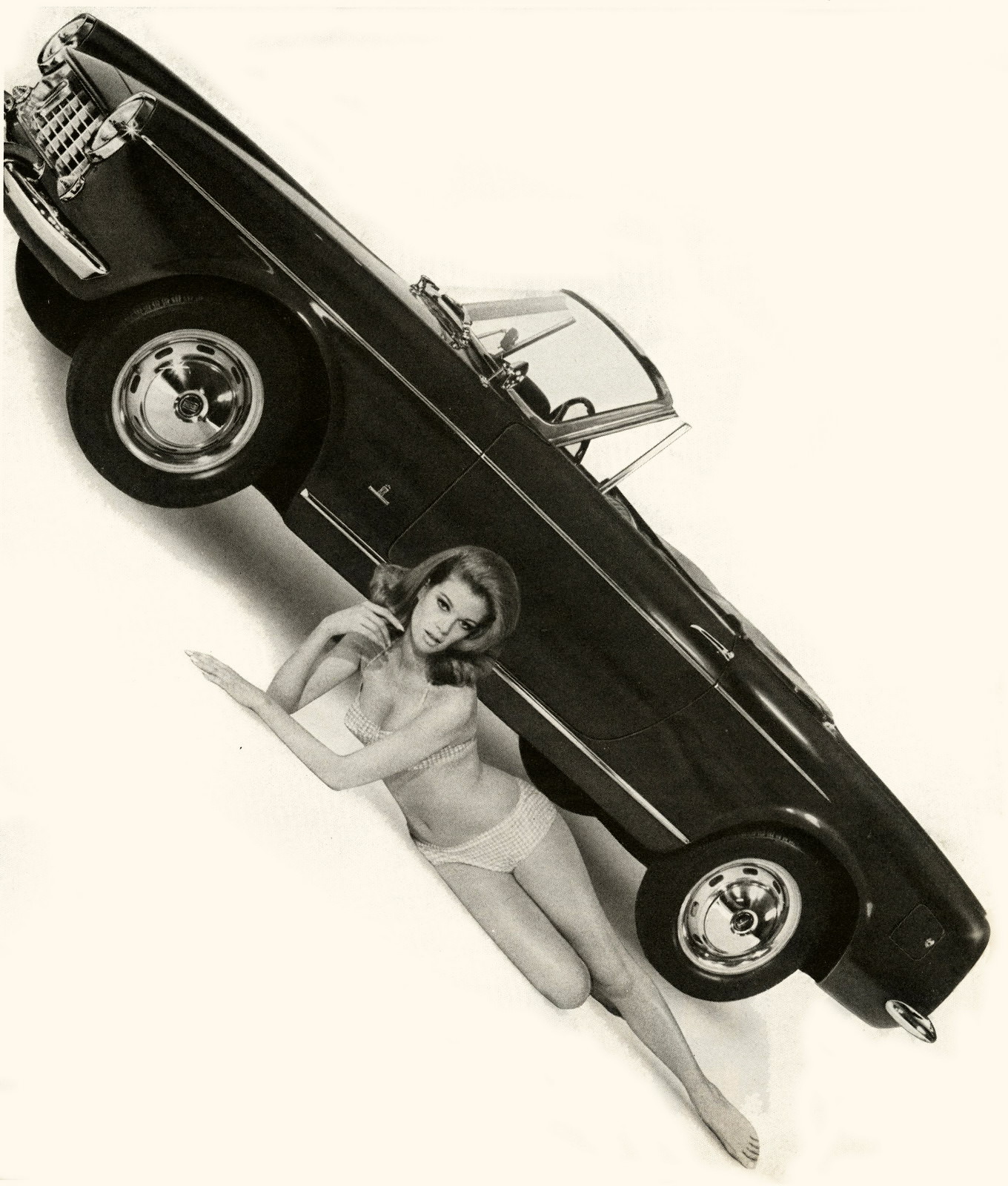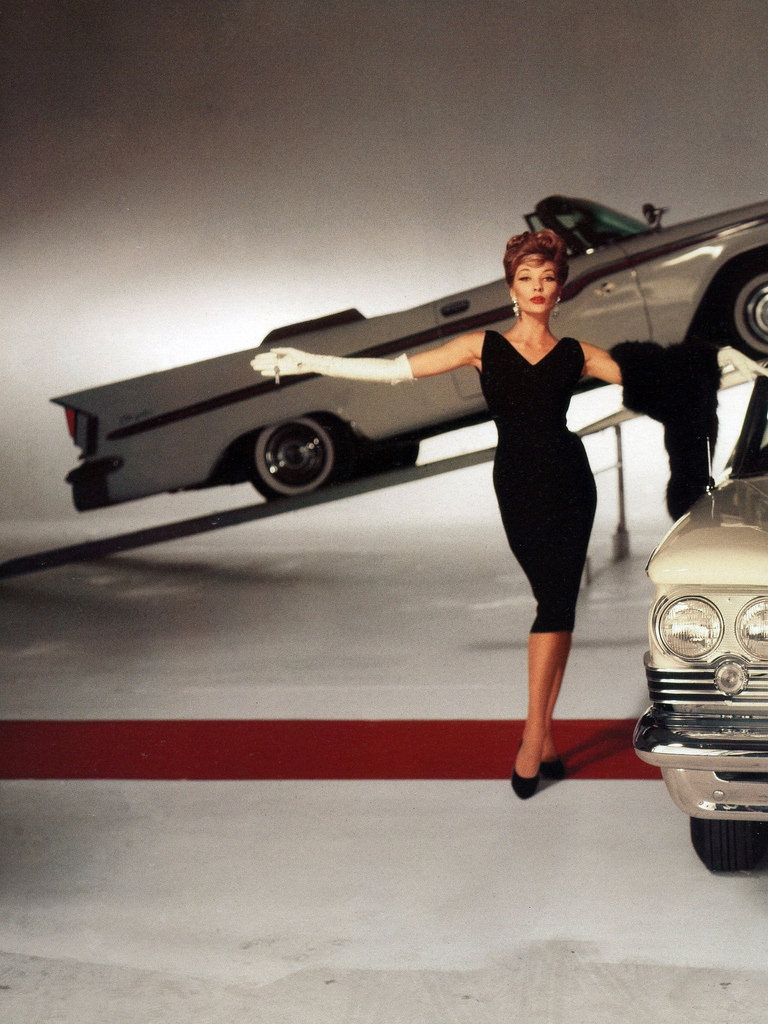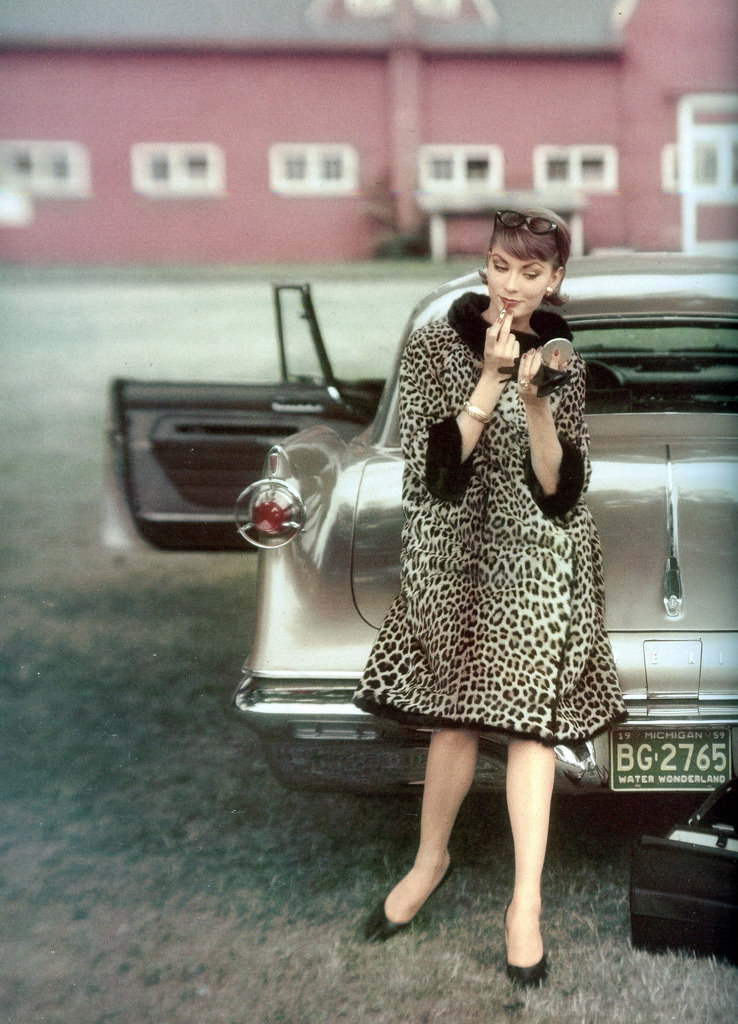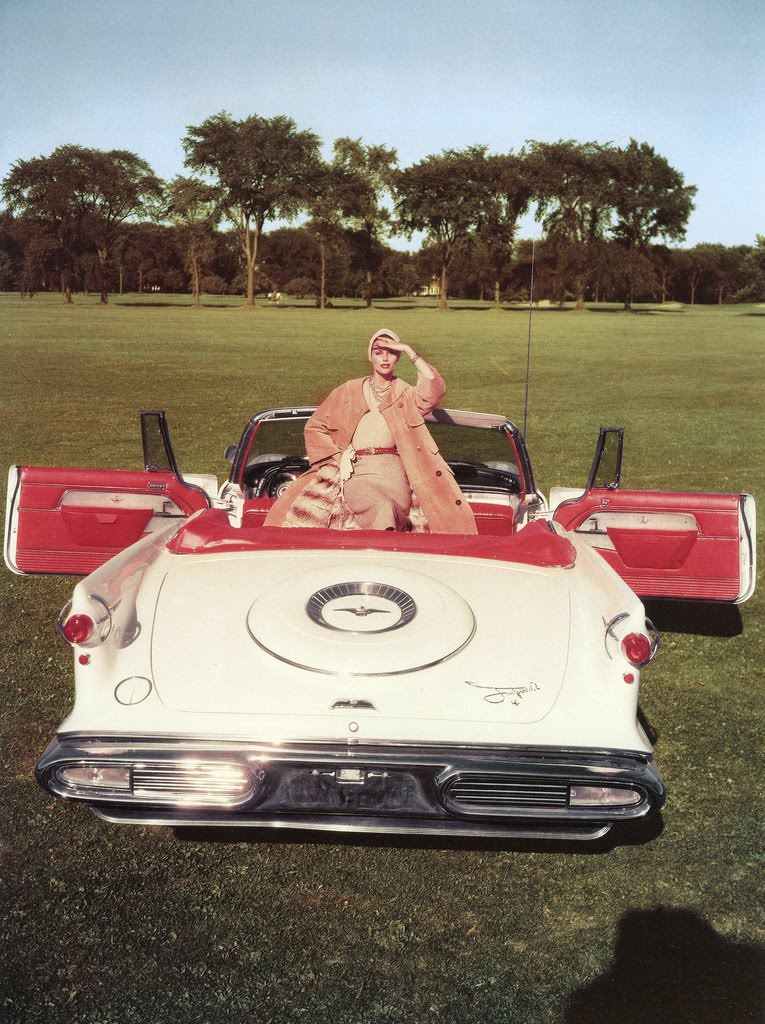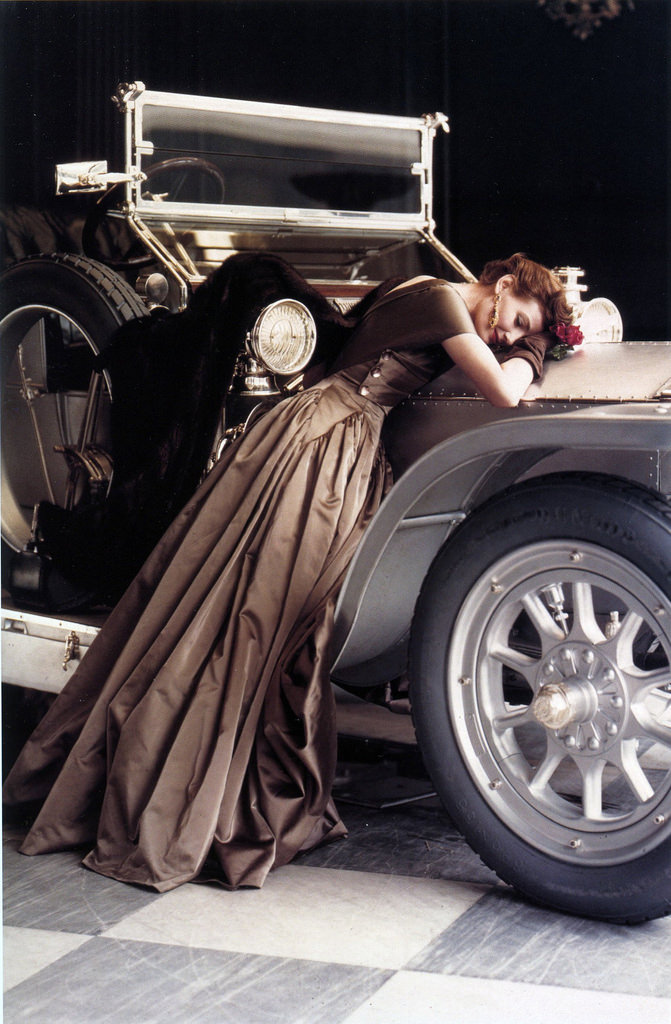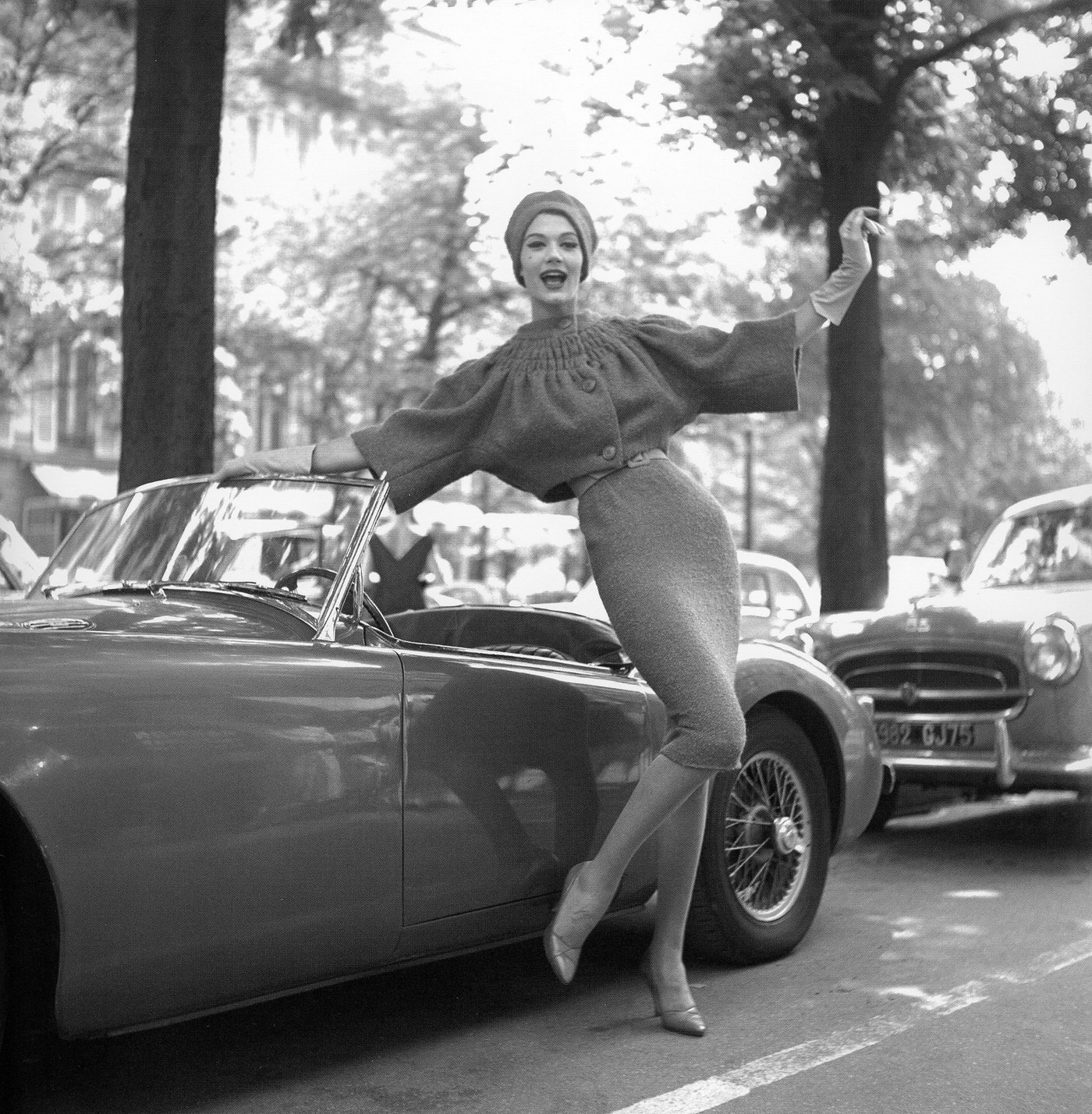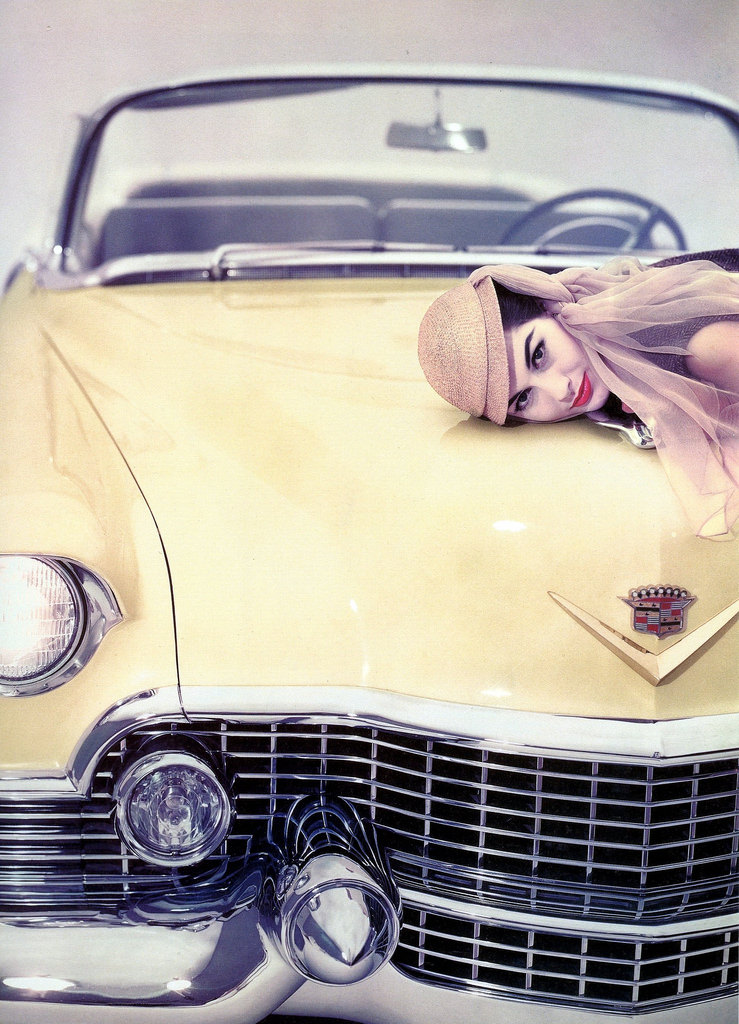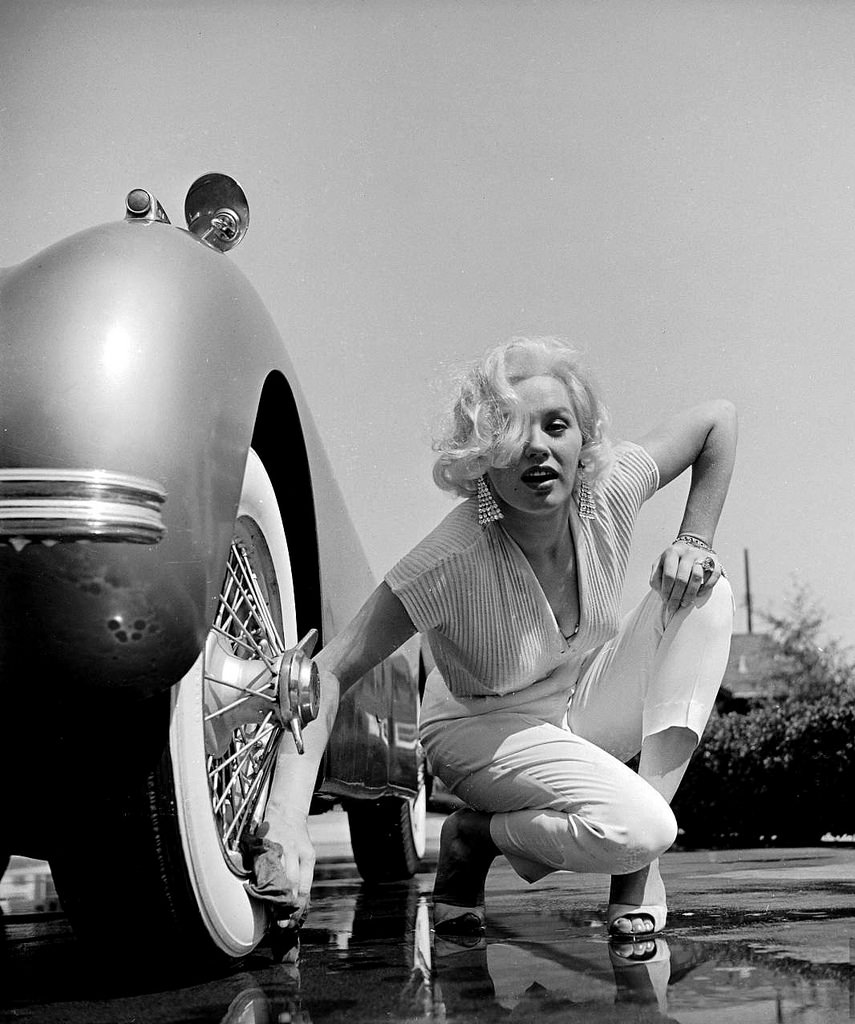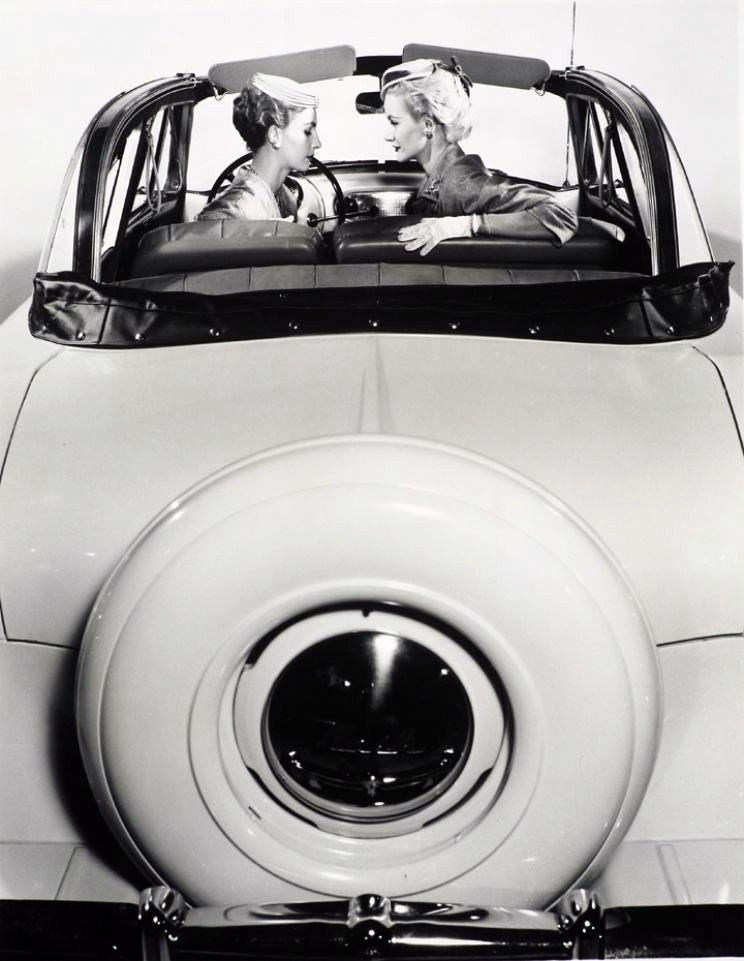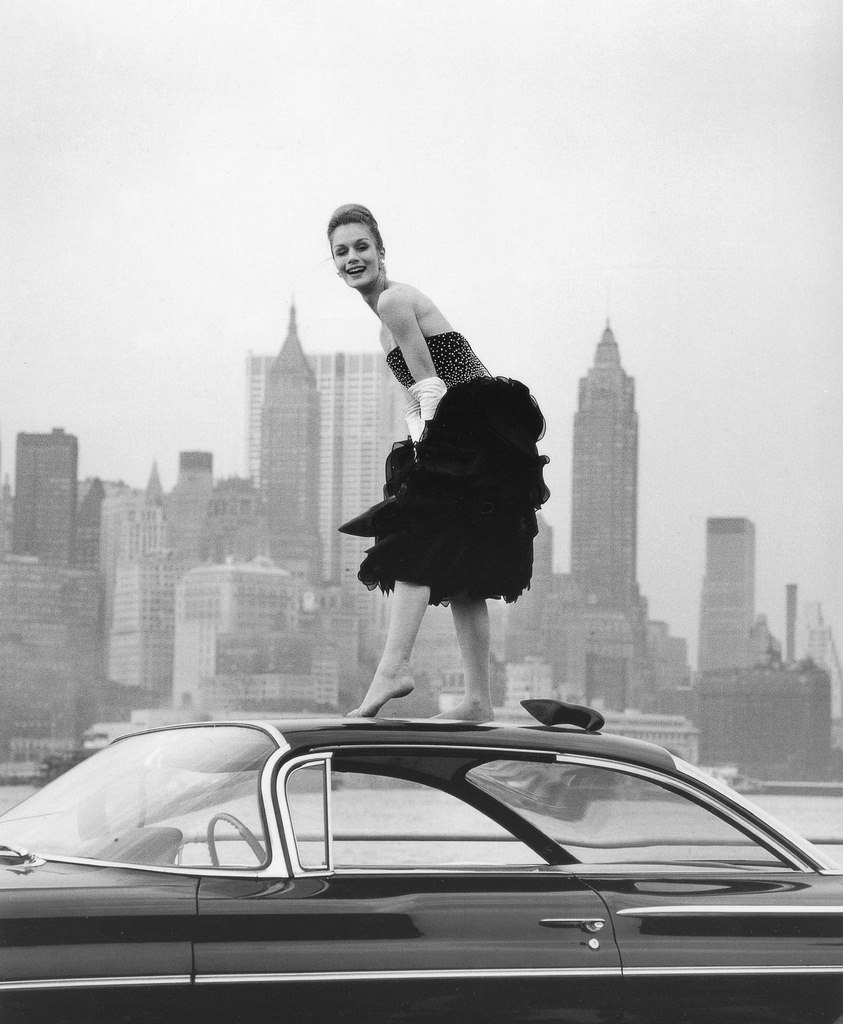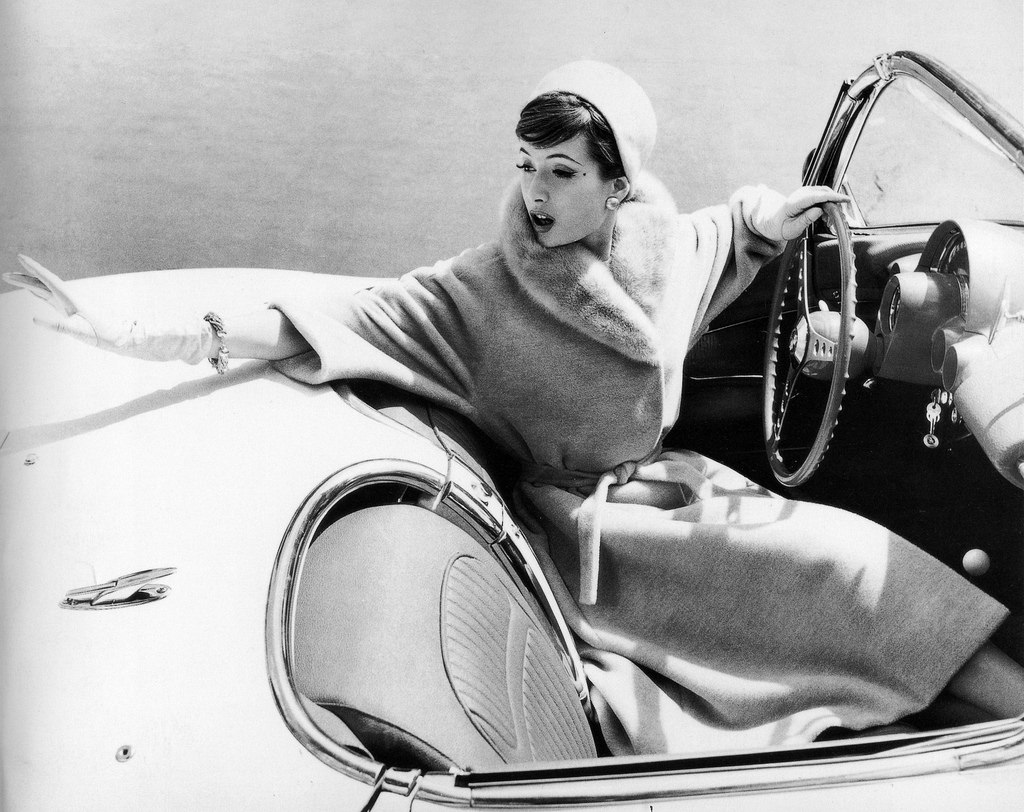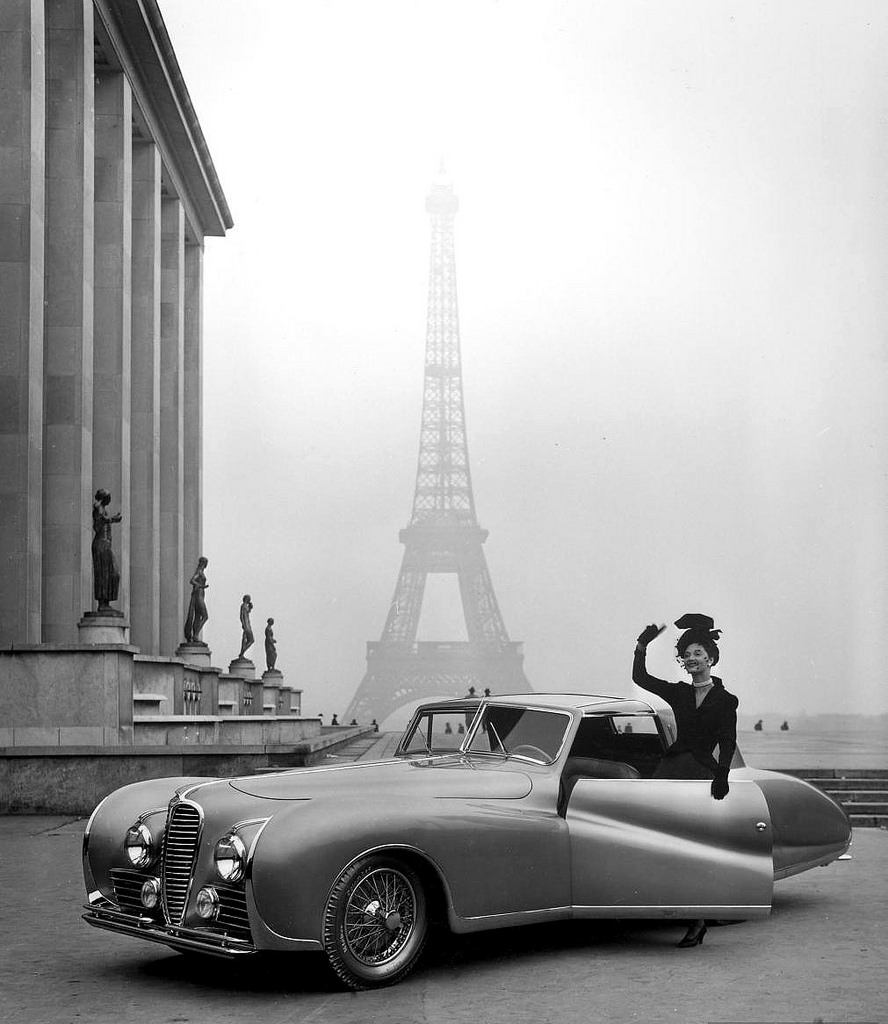The 1950s were a time when cars held a special place in culture. Automobiles were more than just transportation; they represented freedom, progress, and personal style. Car design during this decade featured sleek lines, bright chrome accents, and often vibrant colors. These vehicles were symbols of the era’s optimism and forward look.
During this same period, photography played a big role in magazines, advertising, and promoting goods. Photographs helped sell products and shape public image. Models were often used in these pictures to add a human element, convey a certain lifestyle, or highlight the appeal of the item being shown. Models in the 1950s often wore fashionable clothing that reflected the trends of the time, like tailored dresses, elegant hats, or casual wear that emphasized leisure and comfort.
Combining the visual appeal of classic cars with the popular use of models in photography became a common practice in the 1950s. These photos appeared in car advertisements, lifestyle magazines, and promotional materials for auto shows or dealerships. The goal was often to present the car as desirable, exciting, and linked to a modern, glamorous way of life.
These images worked together to sell a feeling as much as a product. They connected the beauty and performance of the car with the elegance and aspirational lifestyle represented by the model. The lighting in these photos was often bright and clean, making the car’s polished surfaces and the model’s attire look their best. The overall effect was one of sophistication and excitement, capturing the spirit of the 1950s.


